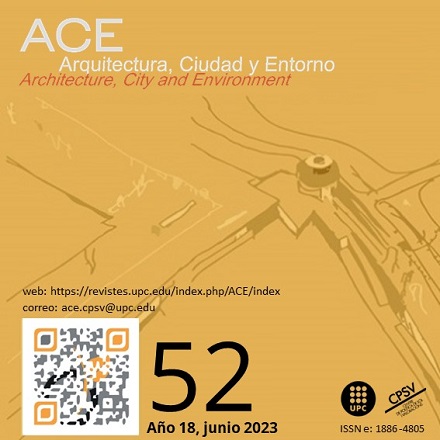University Planning in Africa Through Research: The Urban & Architectural Design of the UAN Campus as an Innovative Educational Complex
DOI:
https://doi.org/10.5821/ace.18.52.12069Keywords:
campus planning, architecture, universityAbstract
The urban & architectural planning of a campus that aspires to a high standard of quality must draw inspiration from research of the local culture and an exploration of the key spatial typologies that the long history of universities has brought forth, as well as the study of the local circumstances. These factors were present in the genesis of a recent project located in Africa that forms the subject matter of this paper: the planning of the new campus for the Agostinho Neto University. Following a predefined intentional methodology, the first scientific research strategy focused on the study of vernacular architectures and forms of primitive human settlements in Angola, so that morphological ideation was rooted in the local culture; one of the formats that inspired spatial patterns was the "kimbo". The second line of scientific research already defined in the preliminary methodological approach explored those university typologies that have historically attained to excellence. From the long legacy of compositional patterns used in complexes dedicated to Higher Education, one of the most distinguished is the quadrangle. The third scientific research line explores the academic and geographical conditionings of the project in Luanda. The paper explains the methodology used to generate the planning of the UAN Campus, as inspired by the outcomes of the processes of inquiry. Finally, some conclusions are stated. Among them are the valid methodology used, as well as the potential extrapolation of the design process followed to other possible projects of Higher Education
Published
Issue
Section
License
| INTELECTUAL PROTECTION CRITERIA |
At this moment, it is count with the "Oficina Española de Patentes y Marcas", while global protection it is being processed by the World Intelectual Property Organization (OMPI/WIPO). Nevertheless the International Standard Serial Number Office (ISSN) has given the following numbers ISSN: 1886-4805 (electronic version) and 1887-7052 (paper version). All articles will be peer reviewed, using double blind reviewing. |
| COPYRIGHT |
The article contents and their comments are authors exclusive liability, and do not reflect necessarily the journal editor commitee's opinion. All ACE published works are subject to the following licence CC BY-NC-ND 3.0 ES http://creativecommons.org/licenses/by-nc-nd/3.0/es/ It implies that authors do not hold nor retain the copyright without restrictions but only those included in the licence. |





































